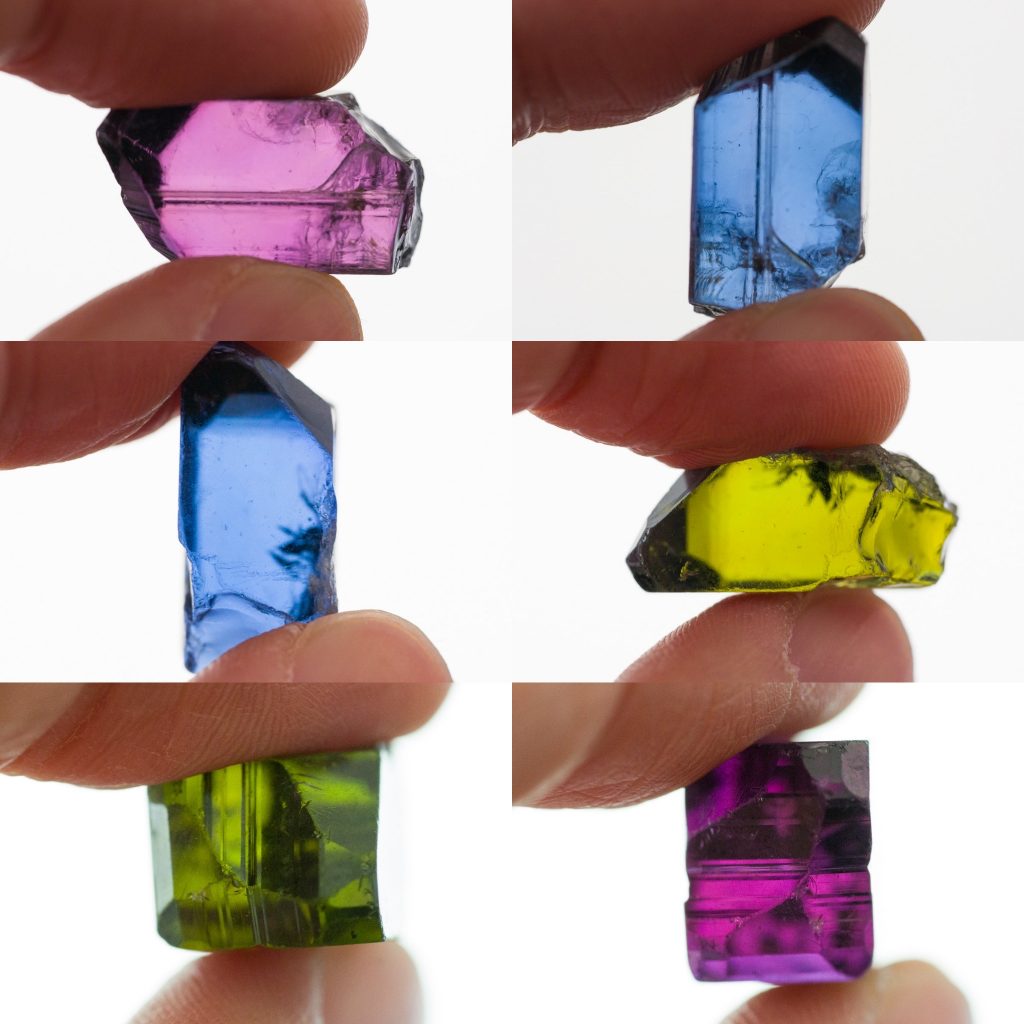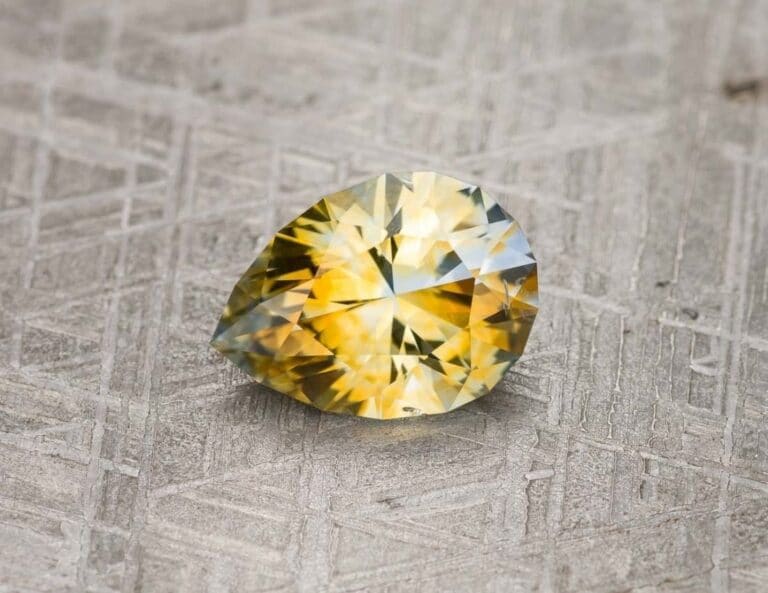Heat Treatment of Tanzanite (Zoisite)
Introduction
We’re often asked about why and how certain gems are treated, particularly heat treatment. This short article will help explain why we heat some of our Tanzanite. Tanzanite is the trade name applied to blue-violet zoisite from Merelani, Tanzania. This gem is fascinating because of its rarity–so far it’s only ever been found in in the Merelani Hills of Tanzania.
While a small amount of Tanzanite is naturally blue out of the ground, the vast majority are shades of brown– the result of a combination of the reddish and yellowish hues found in the natural crystals. Rarely, there are other natural fancy colors of zoisite (sometimes called “Fancy Tanzanite”), and we love to keep these stones untreated when possible. Still, there is little demand for the more common brownish-colored gems until, with a little heat, they undergo a remarkable transformation.
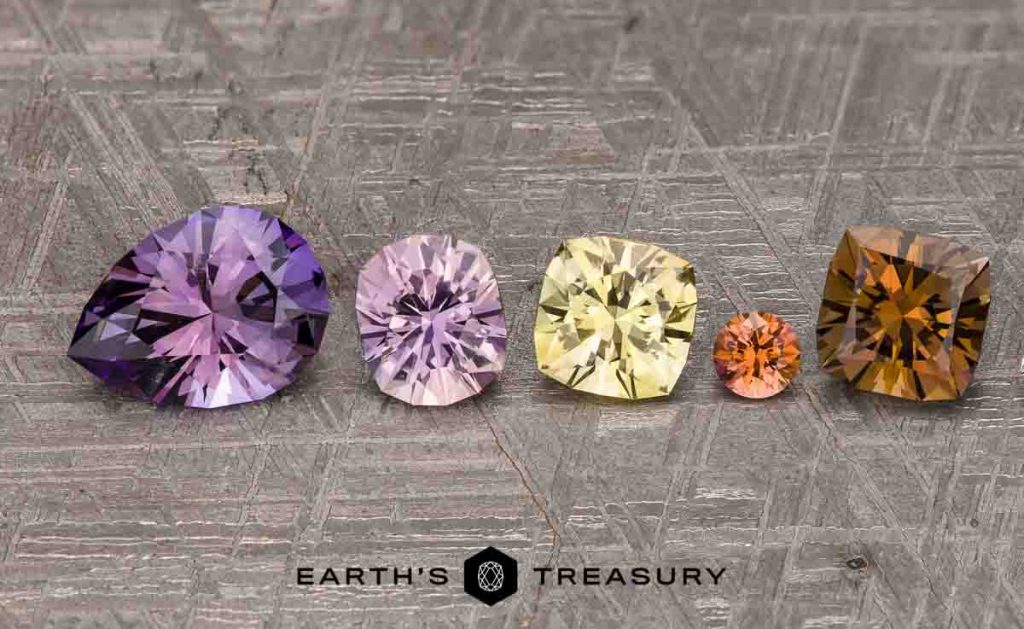
Heat Treatment: Why Heat Tanzanite?
Tanzanite is a trichroic gemstone– meaning it has three colors aligned to different axes of the crystal. This is seen most easily with polarized light, such as that of an LCD computer screen. As you rotate the crystal 90 degrees on each major axis you will see two colors. Typically, one axis is reddish-purple and blue, another is blue and green, and the last is green and reddish-purple. These colors most often mix to show an overall brownish hue in the unheated Tanzanite. Heat treatment reduces the red and yellow components of the color, and lightens the overall tone of the material. This leaves behind gorgeous shades of blue and violet!
Heat Treatment: The Process
The temperature required to change the color in Tanzanite is fairly low compared to those needed to treat other gems, like sapphire. In fact, some Tanzanite has been heated deep underground in the earth, leaving it naturally blue. The low temperatures mean it is all but impossible to reliably detect whether or not a Tanzanite has been naturally heated or heat treated.
We heat our Tanzanite in an electric kiln which controls both the exact temperature and the rate at which it increases or decreases. Controlling the rate is vital to prevent damage and fracturing from sudden temperature changes. We further reduce the risk of thermal shock by surrounding the stone with casting investment powder in a crucible. The heating process takes roughly ten hours to complete, as we slowly ramp up the temperature to about 500 Celsius, hold it for a while, and then slowly ramp it back down to room temperature.

The scientific explanation of what the heating process does is a bit more complicated. Heating Tanzanite changes what is called the oxidation state of the trace amounts of the element vanadium found in the zoisite crystals. That simple small chemical change has a big impact on the color and the change is permanent and stable. The result is a reduction in the yellow/brown elements of the color, turning the gems into spectacular shades of blue-violet. The photo below shows the same gem as pictured above, both before and after heat treatment. Quite a remarkable change!
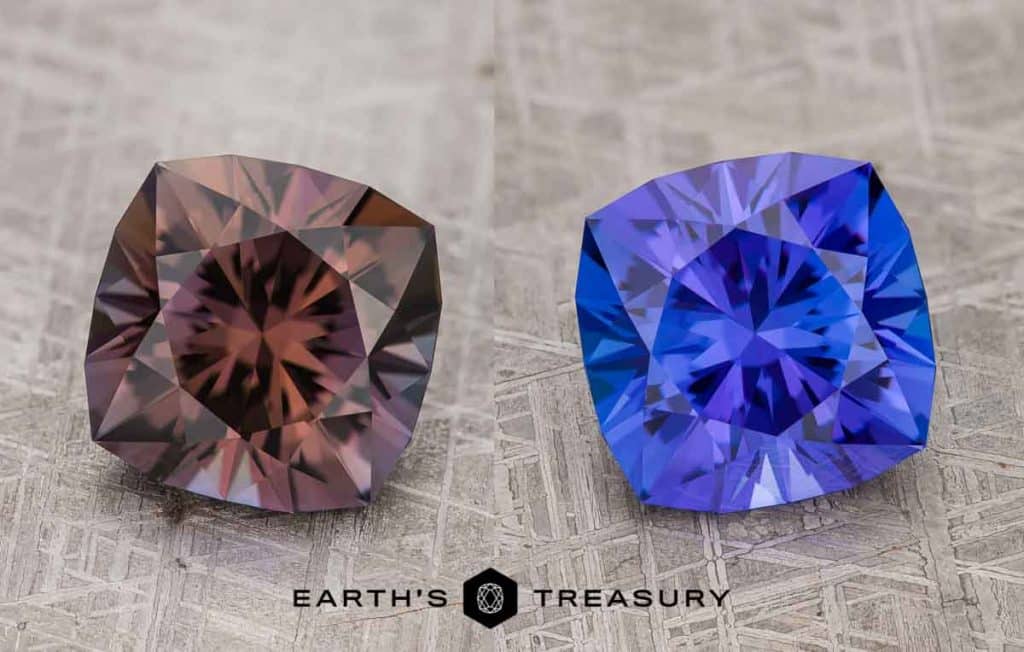
Heat Treatment: Impact on Value
When we heat treat any gemstone, we do so to increase its final value. Remember that a natural, untreated blue Tanzanite is possible but very rare- so generally, most Tanzanite you’ll find was once brown, and is heat treated. You would think that would make an unheated blue more valuable- but it is essentially impossible to distinguish whether a blue Tanzanite was heated naturally in the Earth, or by man in a kiln. Consequently, there’s no premium price on unheated blue Tanzanite.
The image below shows a series of natural unheated zoisite from Tanzania–these are often now referred to as “Fancy Tanzanite.” Here at Earth’s Treasury, we are fine with this term, as the fancy colors we sell are all from Merelani, Tanzania and most people are unaware of the fact that ALL Tanzanite is just zoisite–Tanzanite is a trade name and therefore has no valid scientific standing. Note that the stone on the far right is actually a natural blue Tanzanite. The orange-pink stone is one of the rarest of colors, as is the light pink. Natural greens are also quite rare, and the best ones are a rich bright green colored by traces of chromium. These fancy colors have a strong appeal to collectors and sell at a premium to the standard blues.
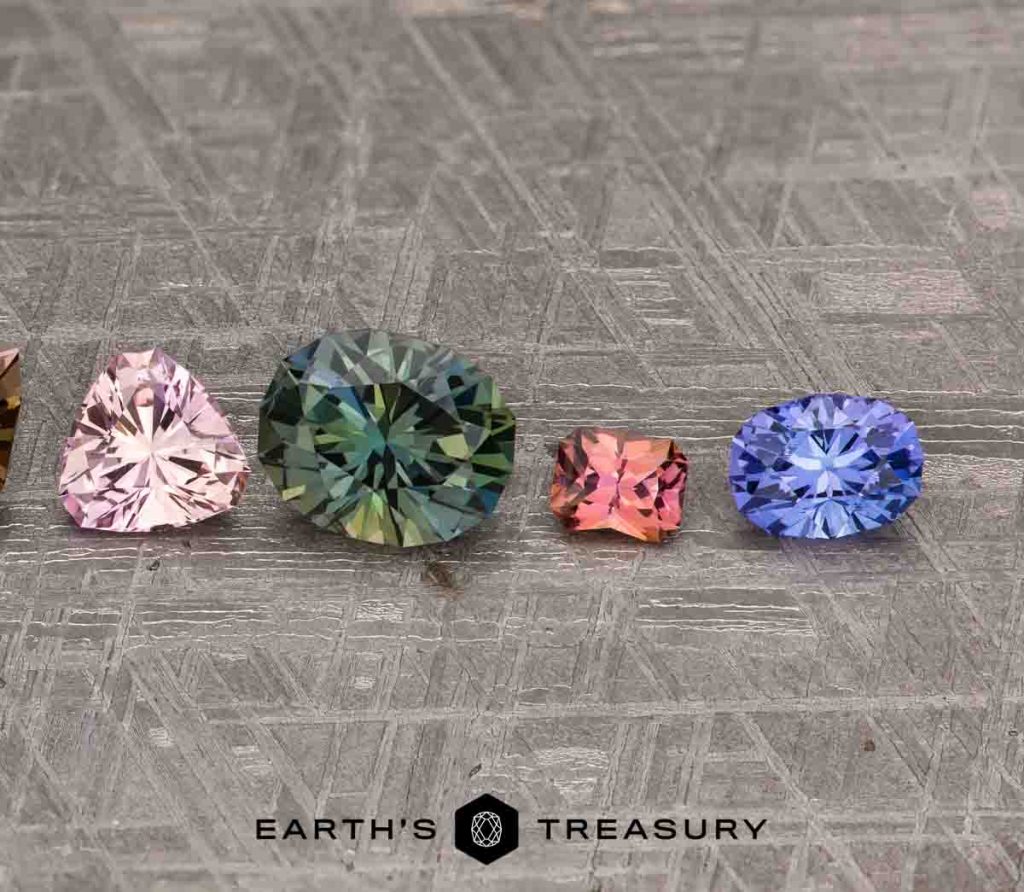
In recent years there has been growing interest in the subtle pastel blues and blue-greens that can be found in both unheated and heated Tanzanites. One gem will often show multiple hues, and these have been unofficially called “Mermaid Tanzanite” by some online sellers. We just call them “Fancy Tanzanite” and love them regardless!
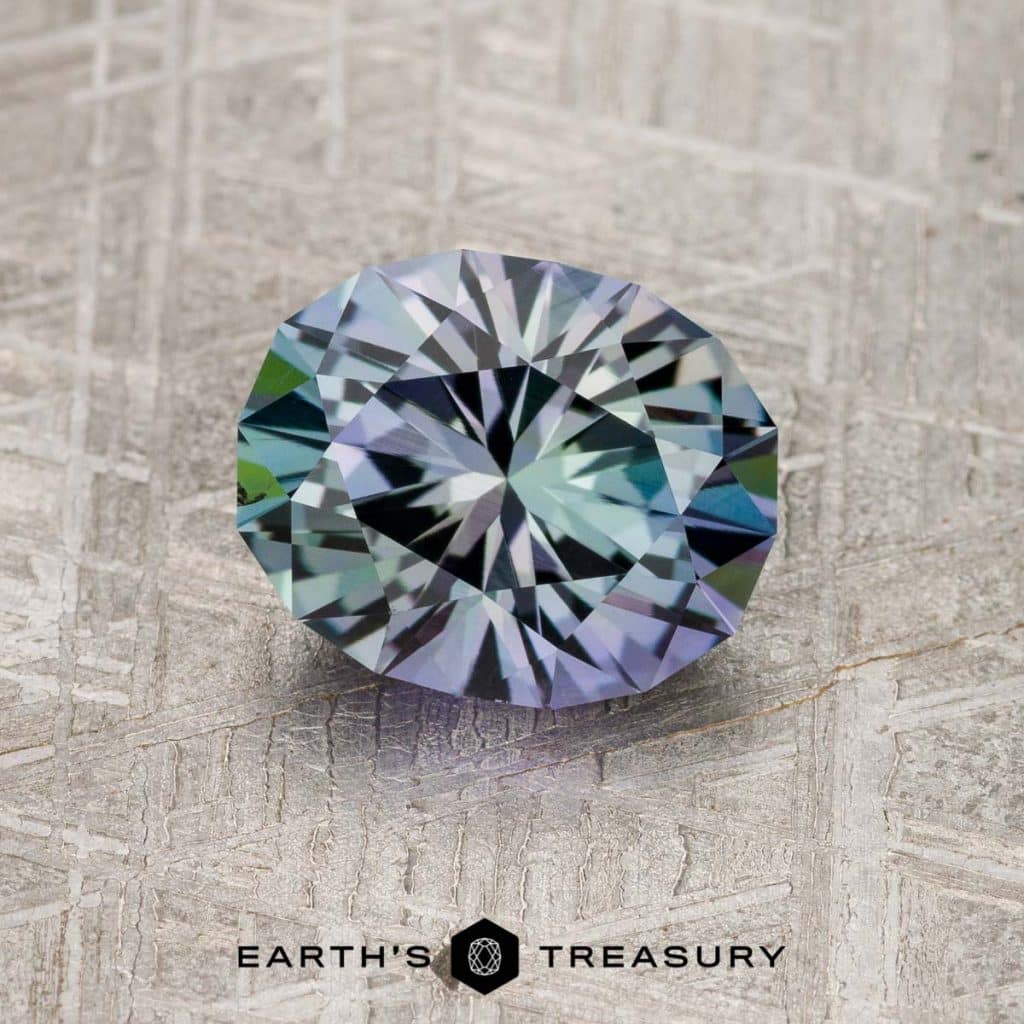
Heat Treatment: Disclosure
Heat treatment should *always* be disclosed. This matters even if the treatment doesn’t effect price, such as with Tanzanite. As a member of the American Gem Trade Association (AGTA), we are bound by an ethics statement we sign every year, requiring that we disclose any and all treatment on our gemstones–something we do, and strongly agree with. The heat status will be disclosed for all our Tanzanite if we know it, and if we do not, we will assume heated and list as such.
All of our gemstones come with a certificate with the weight, the mine locality, and the treatment status clearly listed. We guarantee that the gem identification and treatment status will be verified by any major laboratory when available or we will refund the entire purchase price and lab costs.
Buy Tanzanite
You can browse our extensive selection of heated and unheated Tanzanite and fancy Tanzanite/zoisite by clicking HERE.
Read More
The Gemological Institute of America has some excellent resources if you wish to learn more about Tanzanite.


